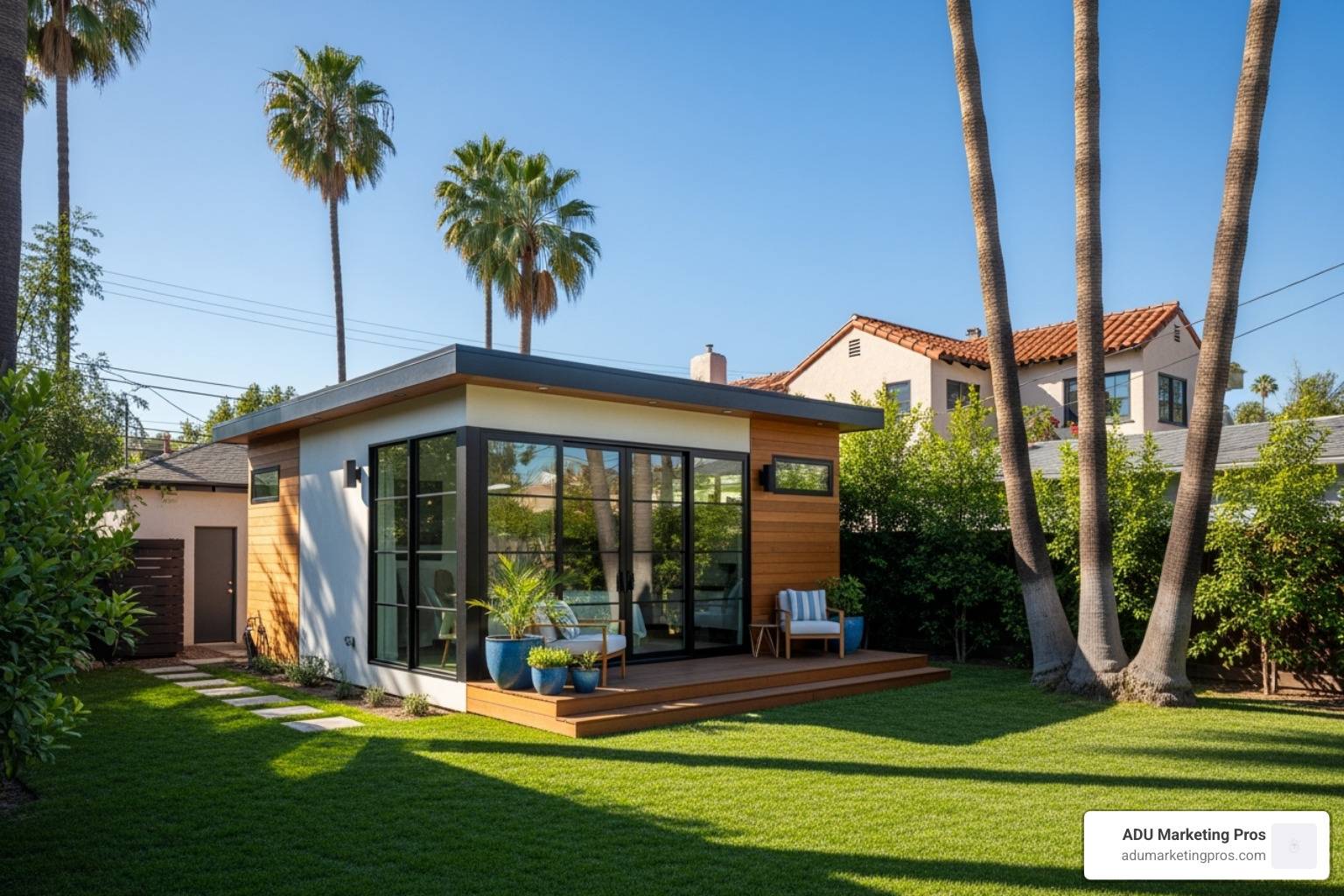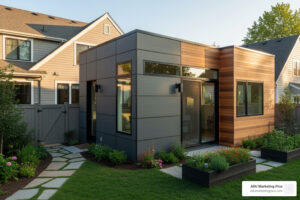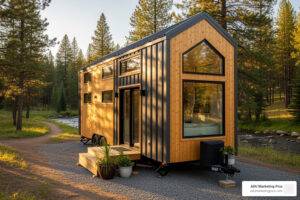Understanding ADU Law in Los Angeles: Your Essential Guide
Navigating adu law los angeles can seem complex, but understanding the basics is key to open uping your property’s potential. Accessory Dwelling Units (ADUs) have surged in popularity across California, with Los Angeles seeing ADUs make up one in four new residential units. This growth is driven by state lawmakers who have made it significantly easier to build these backyard homes.
For homeowners and ADU professionals, knowing the current rules is critical. Here are the key aspects of adu law los angeles you should know:
- State Control: State laws largely dictate ADU rules, limiting local city control over their development.
- Fast Approvals: Permits typically receive ministerial (non-discretionary) approval within 60 days.
- Parking Exemptions: Many ADUs are exempt from parking requirements, especially those near public transit.
- No Owner-Occupancy: The requirement for property owners to live on-site is permanently removed as of 2025.
- New 2025 Laws: Recent legislation further expands ADU opportunities, including for multifamily properties and the legalization of older, unpermitted units.
This guide will break down these laws, helping you understand how to build an ADU in Los Angeles. Whether for extra income, family space, or increased property value, ADUs offer a flexible and affordable housing solution.
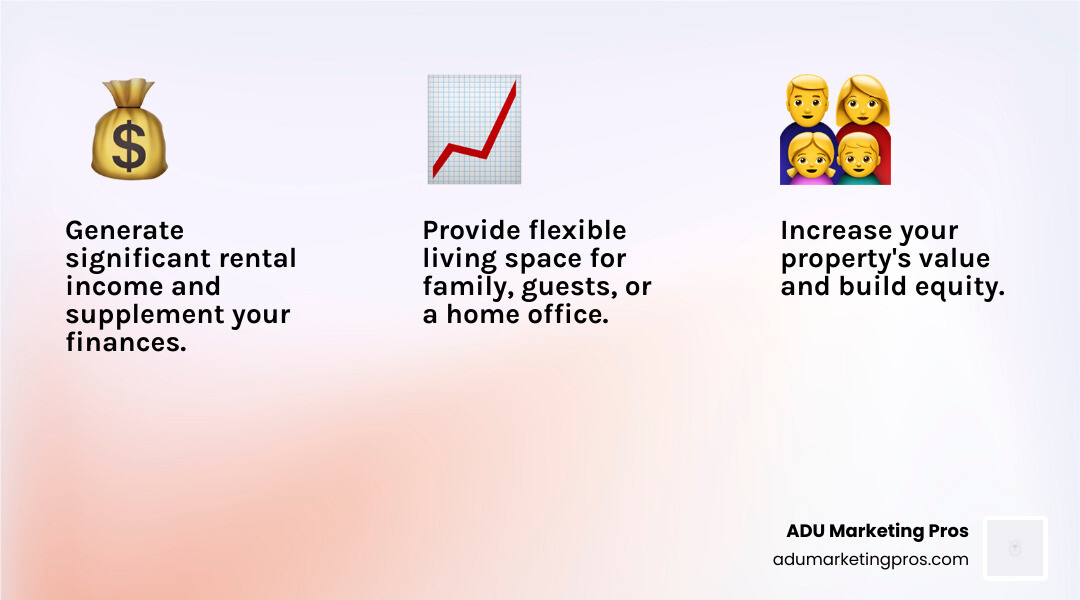
Simple guide to adu law los angeles:
Understanding the ADU Boom: Why Build One in Los Angeles?
Homeowners across LA are finding their backyards hold the key to solving multiple challenges, thanks to favorable ADU law Los Angeles has adopted. Building an ADU is often the most effective way to add housing in California, as you’re working with land you already own.
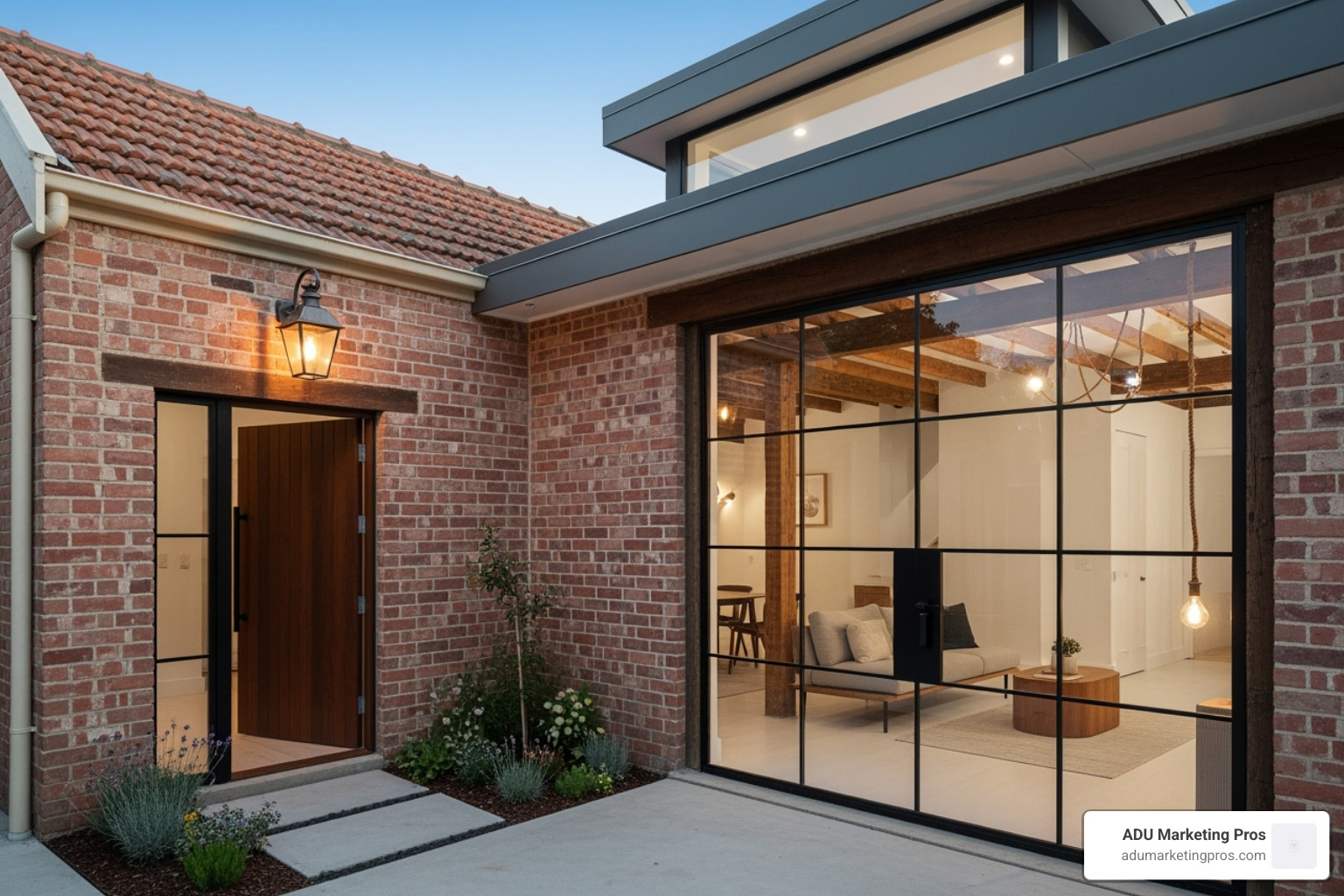
The benefits are compelling:
- Rental Income: An ADU can generate substantial rental income, helping to offset your mortgage or create a new revenue stream.
- Increased Property Value: A well-designed ADU boosts your property’s resale value and home equity by adding functional square footage.
- Multigenerational Housing: ADUs are an ideal solution for keeping family close. Whether for aging parents or adult children, they provide both proximity and privacy. A striking 61% of ADUs are built specifically for multigenerational housing.
- Flexible Space: An ADU’s use can evolve with your needs. Today’s home office can become tomorrow’s art studio, guest house, or personal retreat.
What’s the Difference Between an ADU and a JADU?
When exploring adu law los angeles, you’ll encounter two key terms: ADU and JADU. Understanding the distinction is crucial for planning your project.
An ADU (Accessory Dwelling Unit) is a complete, independent living space with its own kitchen, bathroom, and living area. It can be attached to the main house, detached like a cottage, or created from a converted garage.
A JADU (Junior Accessory Dwelling Unit) is a smaller unit, capped at 500 square feet, and must be created within an existing structure, like the main house or an attached garage. JADUs have an efficiency kitchen and may share a bathroom with the main house, making them a more integrated and affordable option.
The primary differences lie in size, location, and amenities, which affects their cost and use.
| Feature | Accessory Dwelling Unit (ADU) | Junior Accessory Dwelling Unit (JADU) |
|---|---|---|
| Maximum Size | Generally up to 1,200 sq ft (state law) | No more than 500 sq ft |
| Location | Attached to primary home, detached, or converted garage/structure | Within existing single-family home or attached accessory structure |
| Kitchen Type | Full kitchen required | Efficiency kitchen required |
| Bathroom | Must have its own bathroom | May share bathroom with primary dwelling |
| Owner Occupancy | Not required for ADUs as of 2025 (permanently removed by AB 976) | Often implies owner-occupancy due to integration with primary dwelling |
The choice between an ADU and JADU depends on your budget, available space, and intended use. JADUs are great for simple guest quarters, while ADUs offer greater flexibility and rental income potential.
Navigating the Ever-Changing ADU Law in Los Angeles
The world of adu law los angeles is dynamic, which is great news for homeowners. Progressive state legislation has streamlined the process, making it more straightforward than ever to build an ADU.
Today, state laws largely control the rules, limiting the ability of local cities like Los Angeles to impose restrictive ordinances. The most significant change is ministerial approval, which means if your ADU plans meet objective standards, the city must approve them within 60 days. This eliminates lengthy, subjective reviews.
Los Angeles has its own development standards that must align with state law, covering key areas like setbacks (typically 4 feet from side and rear property lines), height limits (at least 16 feet), and parking. You can find details in the City of Los Angeles ADU ordinance (LAMC Section 12.22.A.33).
The Fundamentals of ADU Law in Los Angeles
Recent state laws have fundamentally shifted the ADU landscape:
- AB 976: Permanently eliminates owner-occupancy requirements for ADUs, effective January 1, 2025. This allows property owners to build and rent out ADUs without having to live on-site.
- AB 1033: Creates a pathway for ADUs to be sold separately from the primary residence, similar to a condominium. This process is still complex and requires navigating local approvals, but it signals a future of more flexible property ownership.
- AB 434: Requires cities to develop pre-approved ADU plan programs by January 1, 2025. These programs will offer a catalog of compliant designs, speeding up the approval process for homeowners.
Get Ready for 2025: A Look at New State Laws
New legislation effective in 2025 expands opportunities even further.
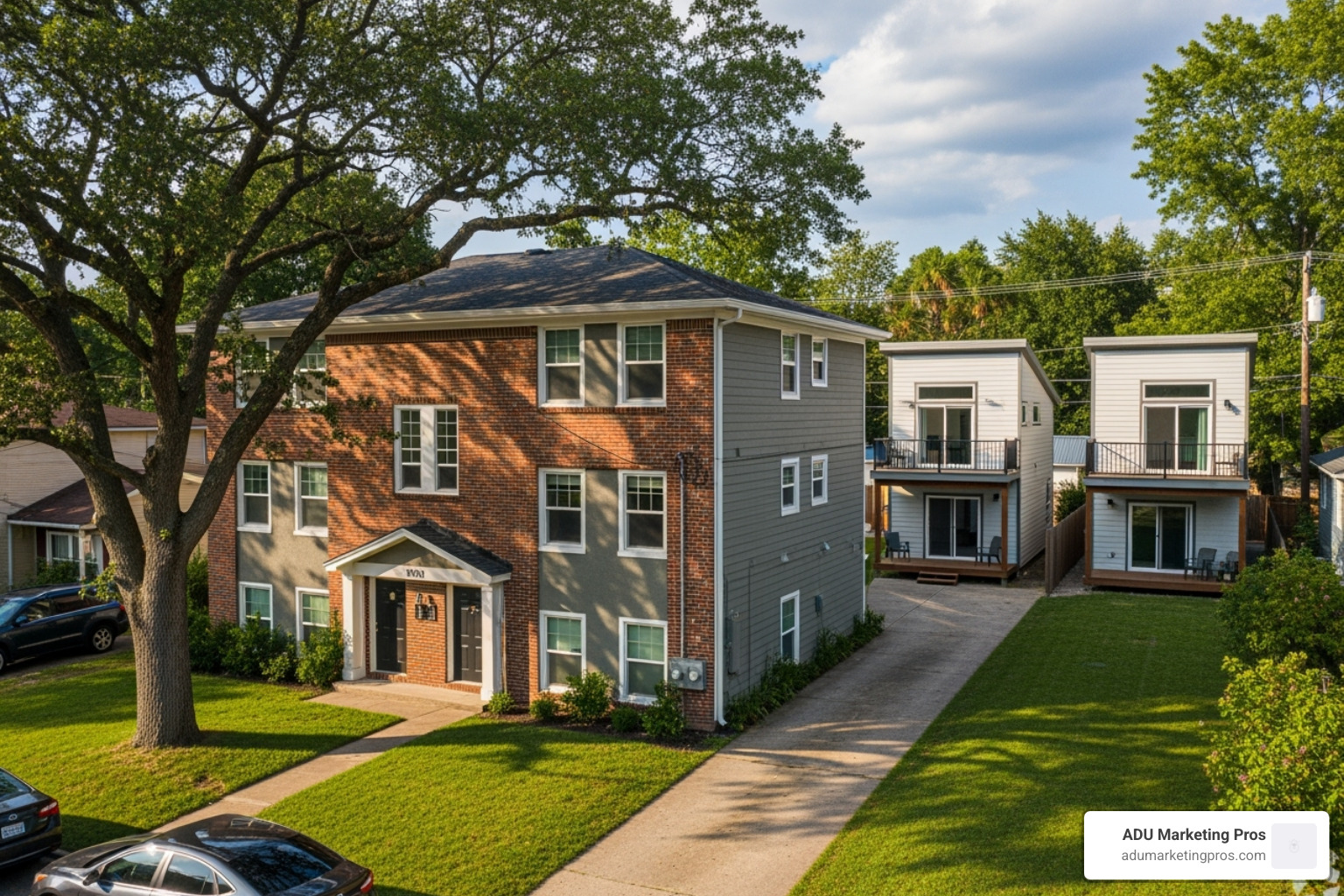
- AB 2533: Extends the amnesty period for legalizing unpermitted ADUs and JADUs built before January 1, 2020. It also prohibits impact fees for these units if no new utility connections are needed, making it easier to bring older structures into compliance.
- SB 1211: Allows owners of multifamily properties to add up to eight detached ADUs. The law also clarifies that cities cannot require replacement parking when existing spaces are converted or demolished to build an ADU. Read the full text of SB 1211 for details.
- SB 1077: Requires the California Coastal Commission and HCD to create clear guidance for ADU development in the California Coastal Zone by July 2026, simplifying what has been a complex process.
Special Considerations: Coastal Zones and Rent Control
While rules are streamlined, some areas require special attention. The California Coastal Zone has additional oversight, but SB 1077 aims to clarify the process for ADU projects near the coast.
The Los Angeles Rent Stabilization Ordinance (RSO) adds another layer for properties built on or before October 1, 1978. If you add an ADU to a single-family home under RSO, the original house becomes subject to the ordinance, though the new ADU may be exempt. If you convert part of the existing home, both units typically fall under RSO. This impacts rent increases and tenant rights, so understanding your property’s RSO status is crucial for your investment.
The Practical Path to Building Your LA ADU
Ready to turn your ADU dreams into reality? The journey from idea to finished unit might seem daunting, but breaking it down into manageable steps makes the process much clearer. Let’s walk through what you need to know to get started.

Under adu law los angeles, eligibility is straightforward. If you own property in a residential zone, including single-family and multi-family lots, you can likely build an ADU. The main requirement is that the ADU is on a lot with an existing or proposed primary dwelling.
Budgeting Your Project: ADU Costs and Financing
Building an ADU is a significant investment. Understanding the costs upfront is key to realistic planning.
- Garage Conversions: This is the most budget-friendly option, typically costing $100,000 to $120,000, as you use an existing structure.
- New Construction: Detached or attached new builds generally range from $180,000 to $400,000. A good rule of thumb is to budget $300 to $450 per square foot.
Costs are influenced by site conditions (e.g., grading, utility access) and finish levels (standard vs. high-end). State law helps by eliminating impact fees for ADUs under 750 square feet and reducing them for larger units.
For financing, options include personal savings, home equity lines of credit (HELOCs), and construction loans. Also, explore state programs like CalHFA’s ADU Grant Program, which can provide up to $40,000 for predevelopment costs.
The ADU Permit Process in Los Angeles
The permit process has been streamlined but requires careful attention to detail. Here are the key steps:
- Research and Feasibility: Familiarize yourself with your property’s specific requirements (setbacks, height limits) via the Los Angeles Department of Building and Safety (LADBS).
- Design and Plans: Work with an architect or designer to create detailed blueprints that comply with all building codes and make efficient use of space.
- Plan Submission: Submit your plans to LADBS, often through the ePlanLA digital portal.
- Plan Check: LADBS reviews your plans for compliance. This is when the 60-day review clock starts. Be prepared for potential correction requests.
- Permit Issuance: Once approved, you can officially begin construction.
- Construction and Inspections: LADBS inspectors will visit at key stages to ensure work matches the approved plans.
- Certificate of Occupancy: The final approval that makes your ADU legally habitable.
For official guidance, visit the ADU page on the Los Angeles Department of Building and Safety website. While the review period is 60 days, the entire timeline from concept to completion typically takes several months.
Assembling Your Team and Avoiding Pitfalls
Project success depends on having the right professional team and knowing how to steer common challenges. A little due diligence goes a long way.
How to Find and Vet a Qualified ADU Contractor
Choosing your contractor is probably the most important decision you’ll make in this whole process. This person (or team!) will be your guide, making sure everything runs smoothly, stays on track, and meets high quality standards. You want someone who truly understands the ins and outs of adu law los angeles and can bring your specific ADU dreams to life.
- Seek Referrals: Ask friends, family, or neighbors who have built an ADU for recommendations.
- Verify Licenses: Ensure any potential contractor has a valid license with no disciplinary actions. You can check this on the Contractors State License Board website.
- Confirm Insurance: A professional contractor must have general liability and Workers’ Compensation insurance. Ask for proof.
- Check References: Call past clients to ask about their experience with the contractor’s communication, budget adherence, and problem-solving skills.
- Review Their Portfolio: Look at past ADU projects to see if their work aligns with your vision and if they have experience with your project type (e.g., garage conversion).
- Get Multiple Bids: Obtain at least three detailed quotes to compare costs and the scope of work.
Common Mistakes to Avoid in Your ADU Project
Foresight can help you avoid common pitfalls. Watch out for these issues:
- Underestimating Costs: Budget for everything, including permit fees, utility hook-ups, landscaping, and a 10-15% contingency for unexpected issues.
- Ignoring Codes and Regulations: Your plans must comply with all current adu law los angeles requirements, including setbacks, height limits, and energy efficiency standards.
- Poor Design: Good design is crucial for comfort and functionality. Prioritize natural light, storage, ventilation, and soundproofing.
- Hiring the Wrong Contractor: An unlicensed or inexperienced contractor can cause delays, poor workmanship, and legal problems. Do your homework.
- Neglecting Utility Connections: Plan for new utility meters, electrical panel upgrades, and sewer/water line connections early, as these can be complex and costly.
- Forgetting HOA Rules: While AB 670 limits an HOA’s ability to prohibit ADUs, they can still enforce reasonable design guidelines. Check with your HOA early.
- Not Legalizing Unpermitted Units: If you have an existing unpermitted structure, use new laws like AB 2533 to bring it up to code. This increases property value and avoids future legal issues.
Frequently Asked Questions about ADU Law in Los Angeles
We get a lot of questions from homeowners who are excited about building an ADU but want to make sure they understand all the rules. Here are the answers to the most common questions we hear about adu law los angeles:
Can I build an ADU on my property if it’s in an HOA?
Yes. Thanks to state law AB 670, your Homeowners Association (HOA) cannot outright prohibit you from building an ADU on a single-family property. However, your HOA can still enforce reasonable design restrictions and architectural standards to ensure the ADU fits the neighborhood’s aesthetic.
You will likely need to submit your plans to the HOA for review. It’s best to communicate with them early in the process to understand their guidelines on materials, colors, and style.
Do I have to provide parking for my new ADU?
In most cases, no. ADU law los angeles provides generous parking exemptions. You are not required to provide an additional parking space if your property is:
- Within a half-mile of public transit.
- In a historic district.
- Part of a garage conversion.
- Within one block of a car-share location.
Furthermore, if you convert your garage into an ADU, you are not required to replace that parking space elsewhere on your property. SB 1211 explicitly prohibits cities from requiring replacement parking when you demolish or convert parking spaces for an ADU.
How long does it take to get an ADU permit in Los Angeles?
State law mandates a 60-day maximum review period for a complete ADU permit application. However, the entire process from start to finish is longer.
The design phase can take 2 to 4 months. During the city’s plan check, they may request corrections, which can add time. Once your plans are fully compliant, the 60-day clock begins.
Overall, expect a garage conversion project to take 5 to 6 months from design to construction, while new construction may take 6 to 9 months. Working with an experienced team can help you avoid delays.
Conclusion: Take the Next Step in Your ADU Journey
Building an ADU in Los Angeles isn’t just about adding square footage to your property—it’s about open uping opportunities that can transform your financial future and living situation. Throughout this guide, we’ve explored how adu law los angeles has evolved to make these projects more accessible than ever before.
The benefits are clear: generate rental income, increase your property value, and create flexible housing for family. With state laws removing barriers like owner-occupancy requirements and streamlining approvals, there has never been a better time to build.
New laws for 2025, including AB 2533 (unpermitted units), SB 1211 (multifamily properties), and SB 1077 (coastal zones), continue to make ADU development more straightforward.
Success hinges on understanding regulations, careful financial planning, and assembling the right team of professionals. While the process requires patience, the rewards can be substantial.
For ADU professionals, this booming market presents incredible opportunities. Standing out requires showcasing expertise and building trust with clients. At ADU Marketing Pros, we help construction and architecture firms differentiate themselves by highlighting their specialized knowledge, not just competing on price.
If you’re ready to take your ADU business to the next level, learn how to market your ADU architecture firm and find strategies to attract high-quality leads and grow your revenue.
The ADU revolution in Los Angeles is here. Whether you’re a homeowner or a professional, the time to act is now.

